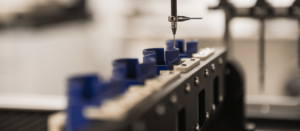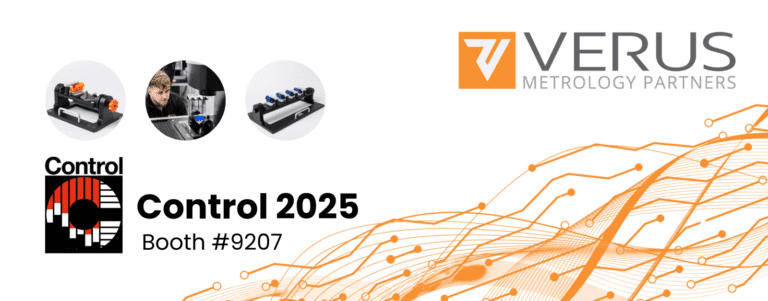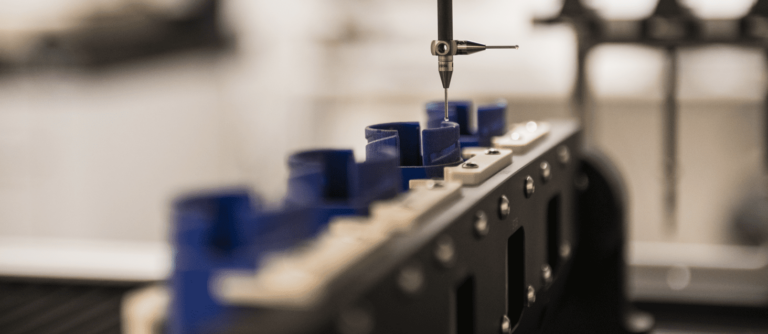In the competitive and highly regulated automotive industry, ensuring the highest levels of quality and safety is paramount. Automotive manufacturers must produce vehicles that meet stringent safety standards while maintaining efficiency and cost-effectiveness. Metrology, the science of measurement, plays a crucial role in achieving the precision and reliability required in this industry. This article explores the pivotal role of metrology in enhancing the quality and safety of automotive manufacturing, demonstrating its essential contribution to the production process.
Metrology plays a crucial role in the automotive industry by ensuring that every component and system in a vehicle meets precise specifications. The complex nature of modern vehicles, which integrate thousands of parts and advanced technologies, demands the highest levels of precision and accuracy.
Here’s how metrology contributes to automotive manufacturing:
1. Precision and Accuracy
Precision and accuracy are foundational to quality in automotive manufacturing. Precision refers to the consistency of measurements, while accuracy denotes the closeness of these measurements to their true values. Both are critical in the production of automotive components, which must fit together perfectly and function reliably under various conditions.
For example, in engine manufacturing, the dimensions of pistons, cylinders, and other components must be measured with high precision to ensure they fit together seamlessly. Any deviation can lead to inefficiencies, increased wear and tear, or even catastrophic failure. Metrology provides the tools and techniques necessary to achieve such high levels of precision and accuracy, ensuring that each part conforms to its design specifications.
2. Reliability and Safety
The reliability of automotive components directly impacts the safety and performance of vehicles. Reliable components function consistently over time and under varying conditions, reducing the risk of failures that could compromise safety. Metrology ensures reliability by providing accurate measurements that help maintain consistent manufacturing processes.
For instance, the braking system of a vehicle is critical for safety. Metrology ensures that each component, from the brake pads to the hydraulic system, meets precise specifications. This accuracy is vital for the braking system to function correctly, providing the stopping power needed in emergency situations.
3. Enhancing Quality Control
Quality control in automotive manufacturing involves systematic processes to ensure that products meet predefined criteria and regulatory requirements. Metrology enhances quality control by providing detailed measurement data that can be used to monitor and improve production processes. This data helps identify trends, spot potential issues before they become significant problems, and ensure that corrective actions are effective.
By integrating metrology into quality control, manufacturers can achieve higher levels of product consistency and reliability. For example, in the assembly of car bodies, metrology can measure the alignment and fit of panels with high precision. This ensures that each vehicle has a uniform appearance and that components fit together without gaps or misalignments, enhancing both aesthetics and structural integrity.
4. Supporting Advanced Manufacturing Techniques
The automotive industry is increasingly adopting advanced manufacturing techniques such as automation, robotics, and additive manufacturing. Metrology supports these techniques by providing the precise measurements needed to control and optimize production processes.
For example, in robotic assembly lines, metrology ensures that robots place and fasten components with exact precision. This reduces the likelihood of errors and enhances the efficiency and reliability of the assembly process. Similarly, in additive manufacturing, metrology verifies that 3D-printed components meet design specifications, ensuring their functionality and durability.
5. Reducing Costs and Improving Efficiency
Accurate metrology helps reduce costs and improve efficiency in automotive manufacturing. By ensuring that components are produced to exact specifications, metrology minimizes the need for rework and reduces material waste. This not only lowers production costs but also shortens production cycles, allowing manufacturers to deliver vehicles to market more quickly.
For instance, in the production of transmission systems, metrology can identify deviations in component dimensions early in the manufacturing process. This allows for immediate corrections, preventing the accumulation of defective parts and reducing overall waste.
6. Ensuring Compliance and Standards
Compliance with regulatory standards is a critical aspect of automotive manufacturing. These standards ensure that vehicles are safe, reliable, and of high quality. Metrology plays a significant role in helping manufacturers meet these stringent requirements by providing precise measurements and detailed data.
Regulatory Standards and Requirements
The automotive industry is subject to numerous regulatory standards worldwide. These standards are set by organizations such as the International Organization for Standardization (ISO), the Society of Automotive Engineers (SAE), and various national regulatory bodies. Some of the key standards relevant to metrology in automotive manufacturing include:
-
- ISO/TS 16949: This standard defines the quality management system requirements for the design and development, production, and, when relevant, installation and service of automotive-related products.
- SAE J1739: This standard outlines Failure Mode and Effects Analysis (FMEA) which is crucial for identifying potential defects and ensuring product reliability.
- ISO 9001: While not specific to the automotive industry, this standard sets out the criteria for a quality management system and is widely used to ensure quality across various industries.
The Role of Metrology in Compliance
Metrology ensures that automotive components and systems meet these regulatory standards by providing accurate and reliable measurements. This is crucial for verifying that each part conforms to design specifications and regulatory requirements. Here’s how metrology supports compliance:
1. Verification and Validation
Metrology is essential in the verification and validation processes, which confirm that automotive components meet all specified requirements. Verification involves checking that the product’s dimensions and characteristics align with the design specifications, while validation ensures that the component performs its intended function effectively and safely.
For example, in the production of airbag systems, metrology can verify that each component, from the airbag fabric to the deployment mechanism, meets precise specifications. This accuracy is vital for the system to deploy correctly and protect passengers during a crash.
2. Documentation and Traceability
Regulatory standards require thorough documentation and traceability of manufacturing processes and measurements. Metrology provides the data needed to create detailed records of each measurement and inspection performed during production. This documentation is crucial for demonstrating compliance during regulatory audits and inspections.
For instance, if a regulatory body requests proof that a batch of engine components meets all quality standards, the manufacturer can provide detailed measurement records and inspection reports generated by metrology tools.
3. Risk Management
Standards like ISO/TS 16949 emphasize the importance of risk management in automotive manufacturing. Metrology contributes to risk management by identifying potential measurement errors and sources of variation that could impact component quality. By addressing these risks early in the production process, manufacturers can prevent defects and ensure the safety of their products.
For example, metrology can identify variations in the dimensions of brake calipers that could affect braking performance. By detecting and correcting these variations, manufacturers can mitigate the risk of component failure and enhance vehicle safety.
4. Calibration and Maintenance
Regular calibration and maintenance of measurement equipment are essential for ensuring accurate and reliable measurements. Regulatory standards often require documented evidence of calibration procedures and schedules. Metrology ensures that all equipment used in the manufacturing process is calibrated according to these requirements, maintaining the accuracy of measurements over time.
For instance, maintaining calibration records for CMMs used in the production of transmission systems ensures that the equipment remains accurate and reliable, supporting ongoing compliance with regulatory standards.
Quality Assurance and Continuous Improvement
Metrology not only helps in meeting regulatory standards but also supports quality assurance and continuous improvement initiatives. By providing precise measurement data, metrology enables manufacturers to monitor and improve their production processes continuously.
1. Statistical Process Control (SPC)
SPC is a method used to monitor and control manufacturing processes using statistical methods. Metrology provides the measurement data necessary for SPC, allowing manufacturers to detect and address process variations before they lead to defects.
For example, in the production of fuel injectors, SPC can use data from metrology tools to monitor critical dimensions and ensure that they remain within specified limits. This helps maintain consistent product quality and reduces the likelihood of defects.
2. Root Cause Analysis
When issues arise in the manufacturing process, metrology helps in conducting root cause analysis by providing detailed measurement data. This data helps identify the underlying causes of problems and supports the development of effective corrective actions.
For instance, if a batch of transmission gears fails to meet quality standards, metrology can help determine whether the issue is due to problems with raw materials, manufacturing processes, or measurement techniques. This enables manufacturers to address the root cause of the problem and prevent future occurrences.
Improving Manufacturing Processes Through Metrology
Metrology is not only essential for ensuring compliance with regulatory standards but also plays a crucial role in enhancing manufacturing processes in the automotive industry. By providing precise and reliable measurements, metrology helps manufacturers achieve greater efficiency, reduce waste, and ensure consistent product quality. Here’s how metrology contributes to improved manufacturing processes:
1. Process Optimization
Accurate measurement data allows manufacturers to optimize their production processes. By identifying areas where deviations occur, metrology helps pinpoint inefficiencies and implement corrective measures. This leads to smoother operations and higher throughput.
For example, in the production of drive shafts, metrology can identify inconsistencies in machining processes. By adjusting the parameters based on precise measurements, manufacturers can ensure consistent product quality and increase production efficiency.
2. Automation Integration
Metrology facilitates the integration of automation in manufacturing processes. Automated metrology systems, such as robotic arms equipped with measurement sensors, can perform inspections faster and more consistently than manual methods. This reduces the time required for quality checks and increases overall production speed.
In the assembly of automotive engines, automated metrology systems can inspect each component for defects and measure critical dimensions in real-time. This integration of automation not only speeds up the process but also ensures higher accuracy and reliability.
3. Reducing Rework and Scrap
Precise measurements help identify defects early in the production process, reducing the need for rework and minimizing scrap. By catching issues before they become critical, manufacturers can save time and resources that would otherwise be spent on correcting or discarding defective products.
For instance, in the production of electronic control units (ECUs), metrology can detect deviations in component dimensions early in the manufacturing cycle. This allows for immediate corrections, preventing the accumulation of defective parts and reducing overall waste.
Reducing Waste and Costs
Waste reduction is a key objective in lean manufacturing, and metrology plays a vital role in achieving this goal. Accurate measurements ensure that materials are used efficiently and that products meet quality standards without unnecessary waste.
1. Material Efficiency
Metrology ensures that materials are used efficiently by verifying that components are produced to exact specifications. This reduces the likelihood of material wastage due to overproduction or defects.
For example, in the production of aluminum alloy wheels, metrology ensures that each wheel is manufactured to the precise dimensions required for optimal performance. This minimizes the amount of raw material wasted and ensures that the final product meets all quality standards.
2. Energy Savings
Accurate metrology can also lead to energy savings in the manufacturing process. By optimizing equipment settings based on precise measurements, manufacturers can reduce the energy consumption of their production lines.
In the case of automotive paint shops, metrology can ensure that the thickness of paint layers is applied consistently. This not only guarantees a high-quality finish but also reduces energy usage by optimizing the curing process, leading to cost savings.
3. Minimizing Defects
By providing detailed data on production processes, metrology helps identify and eliminate sources of defects. This leads to higher yields and fewer rejected products, ultimately reducing costs associated with defective products.
In the manufacturing of steering systems, metrology can help detect and correct variations in component dimensions that could lead to functional issues. By ensuring that all components meet stringent specifications, manufacturers can reduce the incidence of defects and improve overall product quality.
Supporting Continuous Improvement
Continuous improvement is a fundamental principle in manufacturing, aiming for ongoing enhancements in efficiency, quality, and productivity. Metrology supports continuous improvement initiatives by providing the data needed to drive these efforts.
1. Data-Driven Decision Making
Metrology provides precise and reliable data that manufacturers can use to make informed decisions about their production processes. This data-driven approach enables the identification of areas for improvement and the implementation of effective solutions.
For example, in the production of turbochargers, metrology data can reveal trends in component dimensions over time. This information can be used to adjust manufacturing processes, ensuring consistent product quality and reducing variability.
2. Root Cause Analysis and Problem Solving
When issues arise in the manufacturing process, metrology helps in conducting root cause analysis by providing detailed measurement data. This data helps identify the underlying causes of problems and supports the development of effective corrective actions.
For instance, if a batch of fuel injectors fails to meet quality standards, metrology can help determine whether the issue is due to problems with raw materials, manufacturing processes, or measurement techniques. This enables manufacturers to address the root cause of the problem and prevent future occurrences.
3. Implementing Best Practices
Metrology enables the implementation of best practices in manufacturing by providing a clear understanding of process capabilities and limitations. This ensures that production processes are optimized for quality and efficiency.
In the case of exhaust system manufacturing, metrology can help establish best practices for measuring and inspecting complex geometries. This ensures that each exhaust component meets the highest standards of precision and performance.
Conclusion
Metrology is a cornerstone of quality and safety in automotive manufacturing. From ensuring precision and accuracy to meeting stringent regulatory standards, metrology provides the foundation for producing reliable and effective automotive components. As the industry continues to evolve, advancements in metrology will play a crucial role in driving innovation and improving manufacturing processes. By embracing these trends and technologies, manufacturers can enhance the quality and safety of their products, ultimately benefiting consumers and the automotive industry as a whole.







